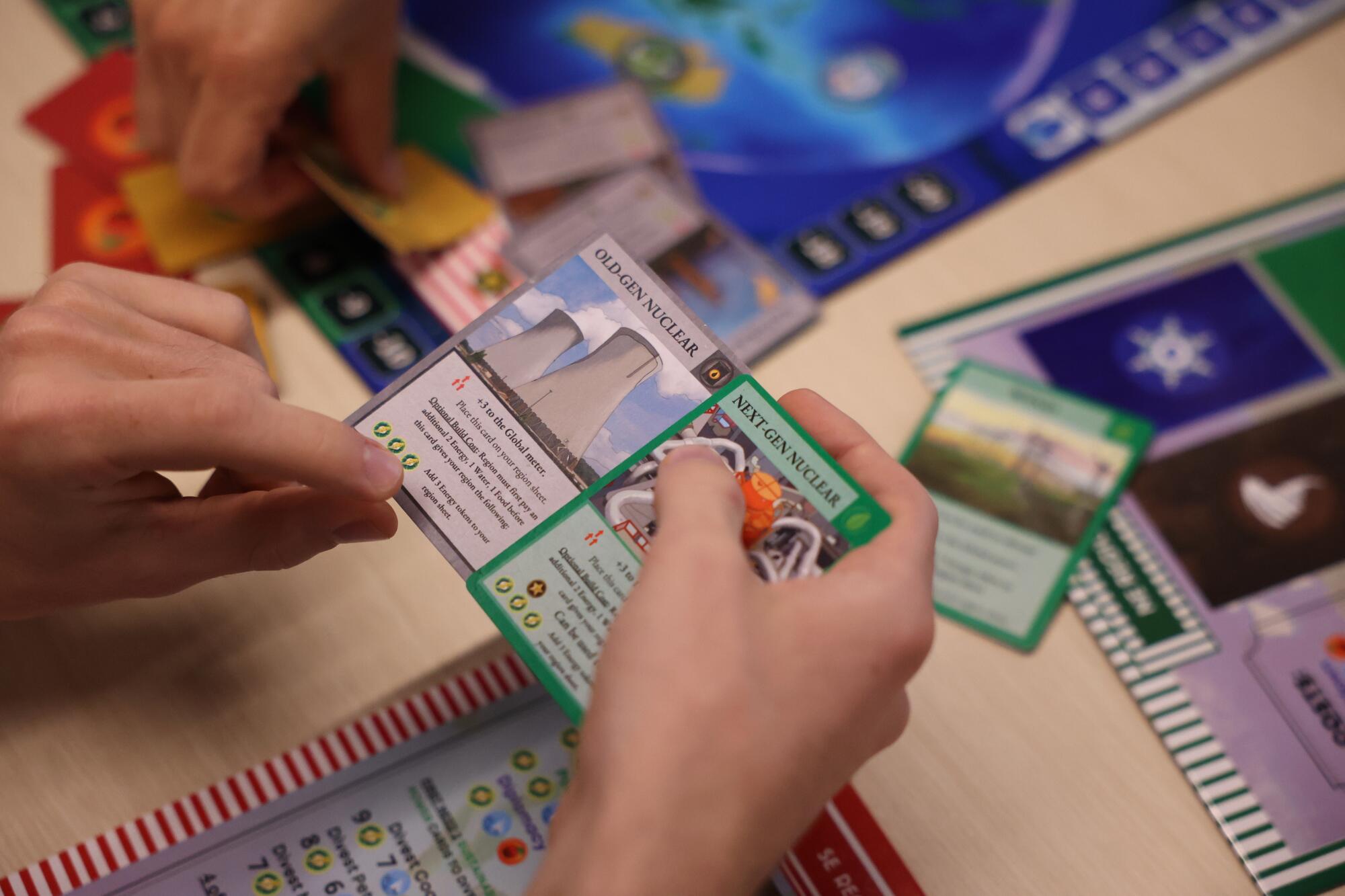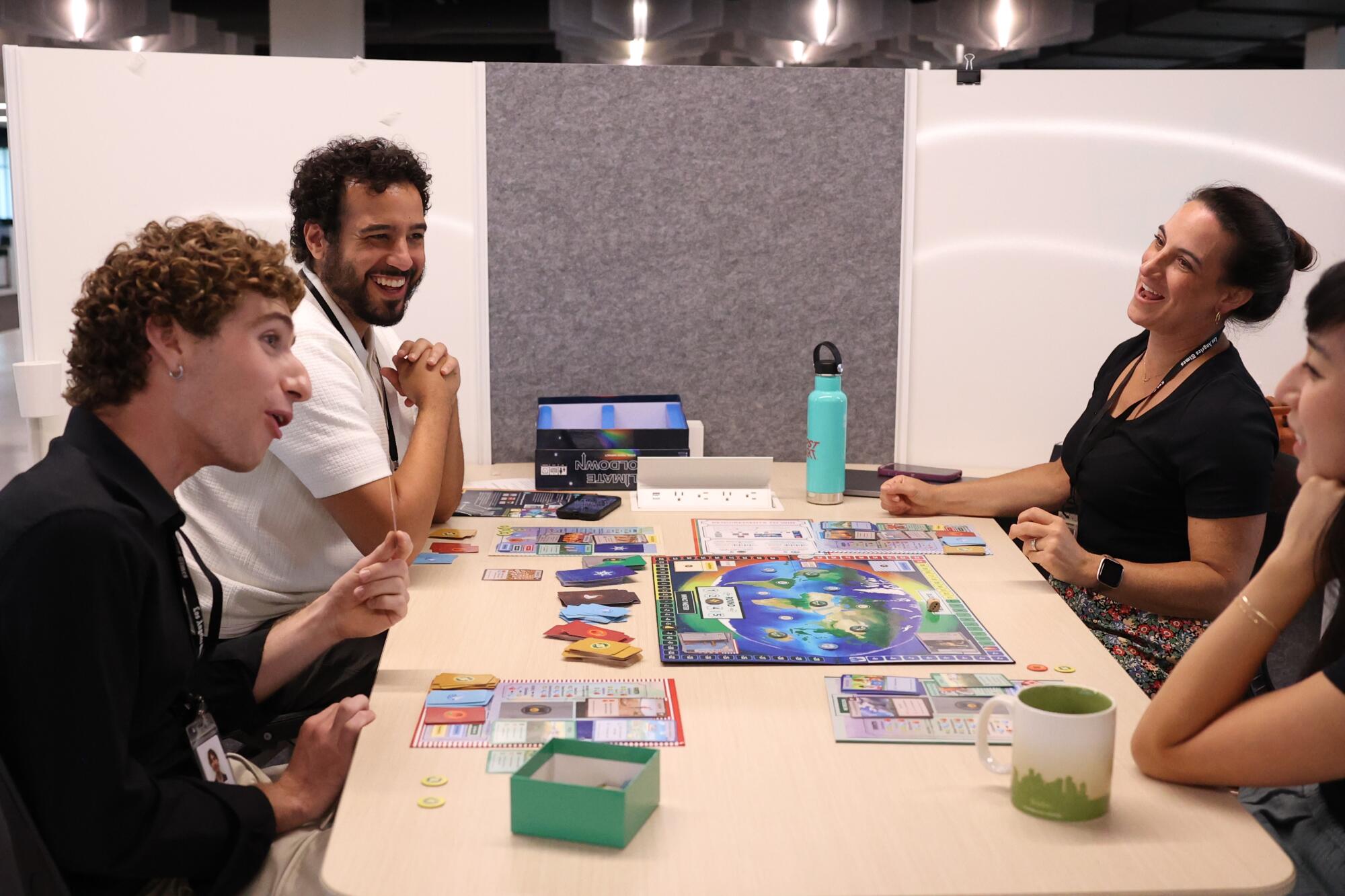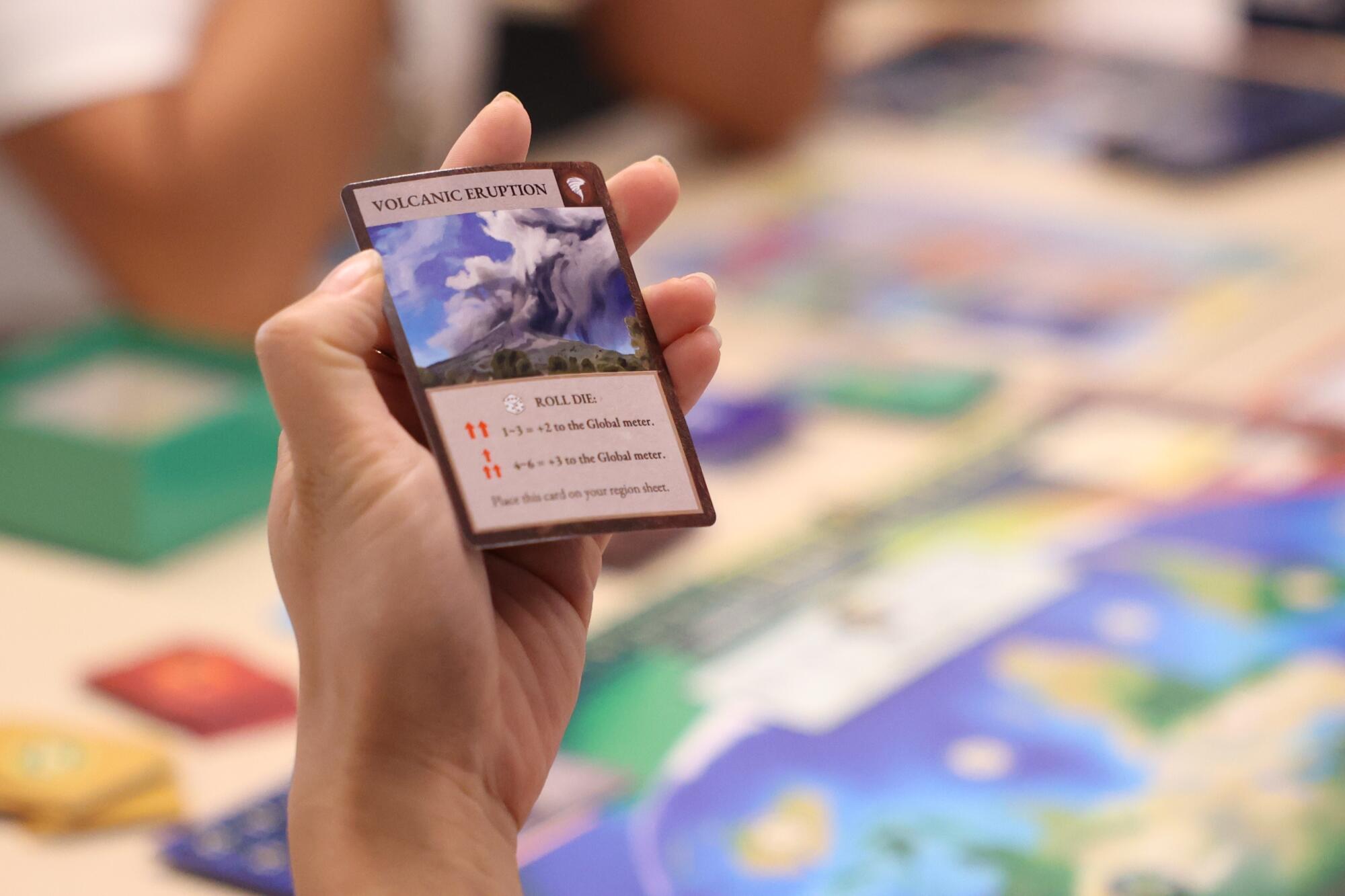
What if solving the climate crisis was as simple as throwing a die?
As a lifelong fan of board games and an avid environmentalist, Thomas Yount understood these tabletop pastimes do more than entertain. They can also educate and spark a dialogue. Recognizing climate change as one of the world’s most pressing issues, Yount thought a board game might provide an opportunity to tutor children and young adults in environmental stewardship.
“Historically, climate change, as an issue, has only risen to the forefront in the last couple decades,” Yount said. “Maybe there was a day of class on it or a paragraph in a book. “I think it really needs to be more a part of the curriculum.”
More than three years ago, Yount, who has worked as a prop master and sound designer in Hollywood, began designing an environmental-themed board game. After production had wrapped for a commercial, he grabbed a spare layout board and began cutting it into makeshift cards, labeling each with a natural disaster, energy source or climate solution. That provided the foundation for Climate Cooldown, an elaborate multiplayer game in which players must overcome natural disasters and invest in clean energy to save the planet from catastrophic global warming.
Climate Cooldown is one of several climate-related games that have sprouted up as the effects of climate change become more apparent.

This summer, popular game maker CATAN released a new version of its classic strategy game set on a fictional island. In CATAN: New Energies, players compete against one another to meet their communities’ energy demands, while taking the risks of pollution into consideration. It presents players with a dilemma: Invest in clean, sustainable energy or opt for cheaper, environmentally damaging, fossil fuels.
“Gaming has an incredible power to reflect real-world challenges and inspire thoughtful conversations,” said Benjamin Teuber, who co-designed New Energies with his late father, Klaus Teuber.
“As we designed this game, my dad said, ‘A game is an experience — not a lecture.’ Therefore, we are not telling players how to act best. We’re inviting them to learn and draw their own conclusions through play,” he said.
In Evolution: Climate, from NorthStar Games, players create their own species and attempt to adapt in the dynamic ecosystem filled with predators, unpredictable food supplies and a fluctuating climate.

Yount has introduced Climate Cooldown to students at several private and charter schools across Los Angeles County, including REALM Creative Academy in Santa Monica, Environmental Charter Middle School in Inglewood and Alliance Leichtman-Levine Environmental Science High School in Glassell Park. The game includes cards with more than 70 environmental vocabulary words involving climate solutions, energy sources and disasters. But they can also serve as productive conversation starters.
“When I was prototyping it, the kids loved having a game to play where they can learn and talk about it,” Yount said. “They immediately started discussing different topics like, ‘Is nuclear good? I thought it was bad.’ And the teacher said, let’s take a break and talk about it.”
Tyler Kenney, who teaches AP environmental science at the Alliance high school, noted that one of the most effective ways to reduce planet-warming emissions is educating people about climate solutions. For some students, the problem is getting them to pay attention.
“I’ve continued to see different opportunities to gamify education,” Kenney said. “How do we take all of these critical topics that we’re teaching in school [and turn those into] very tangible results in our personal carbon footprint?”
He incorporated Climate Cooldown into his lesson plan last winter. In addition to having his class play the game, he challenged his students to consider career paths that might arise from climate solutions it referenced. One of his senior students said the assignment inspired him to explore taking classes on aquaculture, the practice of fish farming, at Santa Monica College.
In Climate Cooldown, players represent four regions of the world, all with varying access to critical resources — electricity, water and food. They must phase out their region’s fossil fuels by allocating their finite resources toward new, clean energy sources while keeping the global temperature below critical levels.
Making matters more complicated, round after round, they encounter bouts of disasters that imperil their resources and challenge their strategy. As with the real-world challenge of global warming, the most fundamental rule of the game is that either players win together as a team or everyone loses.
“I specifically wanted to design it to be cooperative because I think that it provides an opportunity for us to practice working together as global citizens,” Yount said. “Because we’re all going to have adverse impacts, climate shocks and disasters. So being able to look out for each other during those hard times is a really good thing to practice.”

The game, Yount said, helps to provide players with a sense of agency and optimism when facing an issue that often leaves people feeling powerless. “Children tend to think of things as ‘this is how things should be.’ It charges them up to think we could do this and we should do this.”
Yount says he’s encountered “people who are older” who ask, “ ‘Do you think we really do have hope?’ And I tell them I really do. You have to be realistic about it, but I do think it’s important for us to have hope and action — together.”
Over the summer, I enlisted three of my colleagues on The Times’ science, environment and health team — Rosanna Xia, Corinne Purtill and Noah Haggerty — to play Climate Cooldown and see how we might fare.
After we opened the game board illustrating a world map, we soon realized it was as complex and daunting as the subject it was trying to spotlight.
We each drew cards representing the fossil fuel industries our regions needed to divest from. I got petroleum, a card with the silhouette of a pumpjack, like those bobbing in the Inglewood Oil Field not far from our office. Corinne and Noah got natural gas power. Rosanna got coal power, the dirtiest form of energy, which continues to pollute other Western states like Nevada.
Noah and I didn’t have much food in our regions. By comparison, Corinne’s and Rosanna’s regions were abundant. But those supplies dwindled as we drew disaster cards to start each round. Rosanna’s region was devastated by flooding, Noah’s people were stricken by famine, my region had been rocked by an earthquake, and Corinne’s was battered by a cyclone. Then we had to decide if we wanted to put resources toward deploying new energy, environmental conservation or engage in diplomacy.
Rosanna quickly invested in wind and nuclear power, emission-free sources of energy. She donated food to Noah, who dedicated his resources to getting wind and more hydroelectric power. When I drew an energy card, I got a biomass power plant. Corinne put her resources in nuclear power and cooled down by supporting Indigenous land stewardship.
Despite our initial investments, we continued to creep closer to climate catastrophe.
But as the game continued, we began cooperating. We asked for advice. We donated our extra food. And we made decisions that benefited our common goal.
By the fourth round, we won.
“The lessons for me were: Make friends early and take care of each other,” Rosanna said, “because it’s important to divest sooner than later.”
Toward a more sustainable California
Get Boiling Point, our newsletter exploring climate change, energy and the environment, and become part of the conversation — and the solution.
You may occasionally receive promotional content from the Los Angeles Times.








